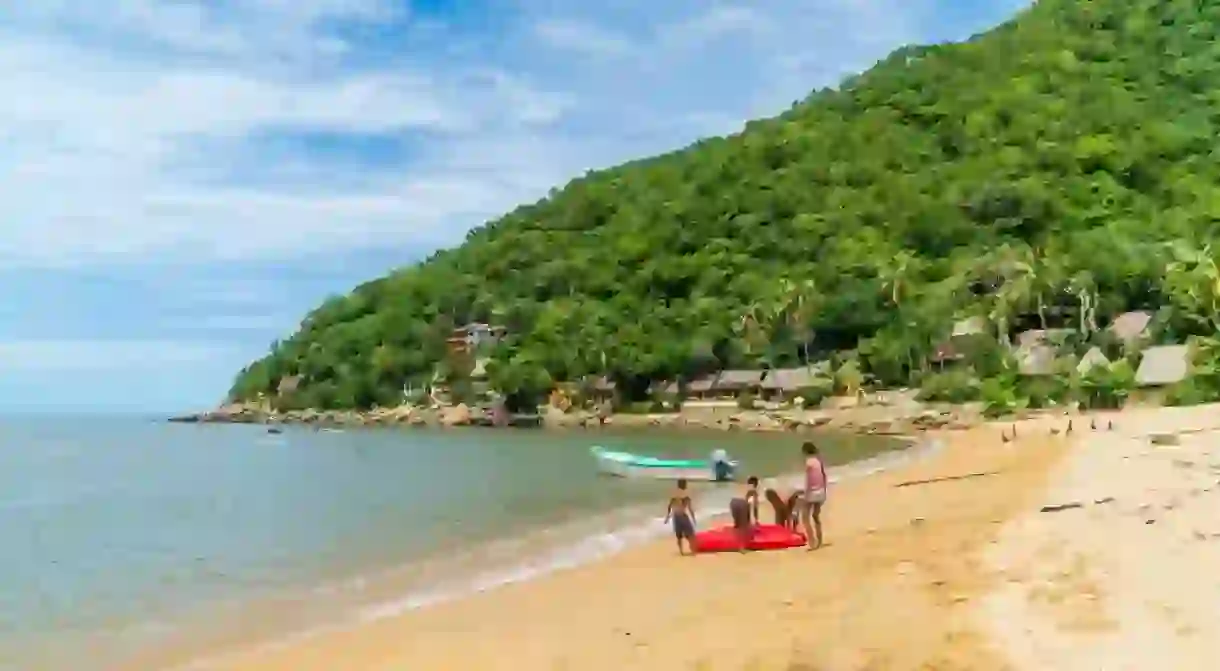Mexico's Top Destinations for Bohemian Travelers

Tulum’s the star when it comes to boho destinations in Mexico. But you’ll find an arty, free-loving spirit across this chili-shaped land. Mystical beaches help. As does a flourishing yoga and wellness scene. But there’s lots more offbeat charm here to delight the avant-garde nomad. Here are the top spots for bohemian travelers in Mexico.
Puerto Escondido, Oaxaca
Natural Feature

The top surf destination in Mexico – and among the best in the world – is Puerto Escondido, in the southern state of Oaxaca. During high season, in late spring or summer, the waves here reach upwards of 6m (20ft), attracting a far-out collection of sandy footed adrenaline seekers and those happy to watch from dry land. Beginner wave riders are well served here by several surf schools, just avoid Playa Zicatela, home to the only-for-pros barrels of the Mexican Pipeline.
Sayulita, Nayarit
Natural Feature

The ever-packed main beach at Sayulita and thrumming nightlife will tell you that it’s no longer a locals-only destination. But the boho vibes linger, kept alive by a thriving surf scene and beginner-friendly waves. There’s also the lesser-known Playa Los Muertos, a short walk from the town center, should you want to escape the blanket of beach umbrellas. Though small, Sayulita is crammed with galleries, beach bars, chilled restaurants and boutiques. And at night, there are often DJ-led beach raves into the early hours.
San Pancho, Nayarit
Architectural Landmark, Historical Landmark
Neighboring Sayulita is the quieter San Pancho, also known as – though rarely called – San Francisco. There’s a gorgeous, stretching flick of sand here, the perfect spot to look out for passing whales when they arrive in winter. In town, the action centers on the main thoroughfare Avenida Tercer Mundo, home to some great restaurants, cafes and budget-friendly accommodation. There’s a decent surf scene here too, but the crashing waves are best avoided if you’re a newbie.
Tulum, Quintana Roo
Natural Feature, Architectural Landmark

The boho vibes are strong in Tulum. A soul-enriching spot on the Caribbean coast helps, but it’s the yogis tootling around town on bikes and boundary-pushing galleries that really make this an essential stop. Leading the way is Sfer Ik, a contemporary art gallery that looks like a Dalí -designed treehouse, showcasing visual arts and workshops.
Yelapa, Jalisco
Historical Landmark, Natural Feature
If you like your boho breaks remote and peaceful, visit the tucked-away town of Yelapa on the Pacific coast. You’ll need to take a panga (a traditional fishing boat) from Puerto Vallarta to get there and bring cash – there are no ATMs. But what awaits is a tiny village clustered around a small bay, with a hillside jungle behind. There’s a welcoming community of locals and escape-from-it-all expats, restaurants on the sand and peaceful walks to waterfalls.
Careyes, Jalisco
Natural Feature
Ocean castles and private villas may not be your conventional boho set up, but Carayes is anything but conventional. This is one of the most exclusive private estates in Mexico, primarily populated by an international collection of artists and free spirits. The social calendar is pretty special too, including the invite-only Ondalinda festival – international DJs, Mexican crafts boutiques and wellness – and the equally exclusive Arte Careyes Film Festival.
Todos Santos, Baja California Sur
Architectural Landmark, Natural Feature, Hiking Trail

This quaint town on the Pacific coast of the Baja California peninsula was founded as a Jesuit mission in the 18th century, but has more recently acquired a rep as a major artistic hub. Mexican artists have flocked to the area in the past decade, and new galleries and art studios are springing up constantly. The picturesque town is an engaging place to explore and the area also offers a range of opportunities to hike, snorkel with tropical fish, and swim with sea lions.
The Best Trips and Tours in Mexico
Historical Landmark

Mexico is one of the most exciting countries in North America, if not the world, with its lively city streets brimming with culture, music and some of the best street food you’ll find anywhere. But it’s also a country of fascinating history and amazing natural wonders, with Aztec and Mayan temples found right next to mystical cenotes.
This is an updated version of the original article by Stephen Woodman.













